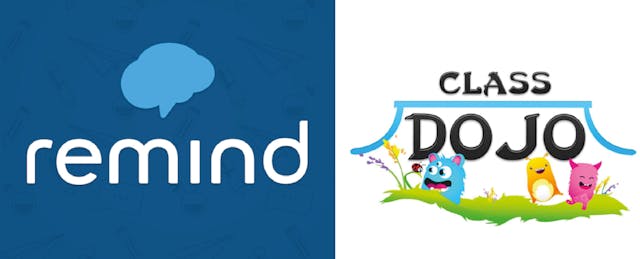ClassDojo and Remind are two of the biggest names in edtech today, with tens of millions of users each, and $10.1 million and $59.5 million raised, respectively.
Although the companies began by tackling different problems in education (Remind lets teachers text-message students and parents without exchanging telephone numbers; ClassDojo helps teachers manage student behavior by awarding real-time feedback with audio cues) recent moves by each indicate that the two companies are looking to broaden their product scopes, and creep into each other’s territories.
If this trend continues, schools are likely to be faced with two popular products that fill the same needs. So, how might the companies fare in a head-to-head competition for classroom time?
EdSurge asked more than forty teachers who were using either Remind or ClassDojo to give feedback on their experiences. During four focus groups held in Los Angeles and Seattle, teachers filled out a survey on either ClassDojo or Remind. All the educators surveyed were already using the product they surveyed in their classrooms.
Here’s what the educators had to say:
What problem does this help you solve?
ClassDojo: Teachers cited student behavior, class focus and parental participation as areas where ClassDojo helped them.
“Last year I had problems with student behavior in and outside of class. Classdojo helped to calm my storm and make for a peaceful last 3/4 of the year.”
Remind: Educators felt that Remind helps them communicate efficiently with students and parents, and improves student completion rate on assignments.
“Remind increases homework completion and submission rates; it’s very helpful to include parents in the information loop.”
What's your biggest challenge with this product?
ClassDojo: When parents participate in ClassDojo, it helps teachers promote positive student behavior; but getting parents to buy in can be a challenge.
“My biggest challenge was getting parents to sign up for it. Parents either think there is a cost since they are downloading an app, or they don’t have internet access at their house. Also, I work in a low-income and high ELL school and it can be especially difficult to get my Spanish-speaking parents to sign-up.”
Remind: The product is most useful when all students in a class sign up, but getting 100% participation from students can be tough.
“It’s hard getting all my students to sign up, especially because there are always a few students who don’t have a phone.”
How does this tool work differently among your different student populations? Are there groups who benefit more? Less?
Note: Broadly speaking, teachers predominantly thought that both products could work for all students. However, there were a few distinctions.
ClassDojo: Some teachers felt that students with limited access to technology at home may benefit less, and that students with behavior problems may have higher classroom gains than students w/o behavior problems.
“The groups that I feel it works best with are the ones that end to be off-task and class clowns. Making this group immediately aware of their score helps them stay focused.”
Remind: Educators felt that at-risk and disorganized students benefit especially from the extra structure Remind provides. Similar to the educators using ClassDojo, teachers using Remind felt that students from lower-economic families and ELL families may benefit less if they don’t have the same access to technology.
“Some of my ELL families still refuse to read Remind since they do not use English much. It will be helpful if they can view messages directly translated in the choice of language.”
Are there ways that you use the product that are different from the ways advertised by the company?
ClassDojo: Some teachers are moving away from behavior management, using the tool instead to track student participation in events or class discussions. Others are experimenting with how behaviors are displayed.
“I use it to track participation in our college awareness program (ie--did you wear your shirt?), who attends certain events, etc.”
“I use it on a weekly basis and give recognition to students with the most points at the end of the week. But all other students remain anonymous.”
Remind: Educators exploring Remind’s potential are finding ways to make students responsible for their actions, as well as ways to better reach the parent community.
“I ask my students to send reminders home to their parents rather than doing it myself. The students take pride in sending messages home, and it helps them take greater responsibility for completing assignments.”
“I enjoy how it functions as a mini blog. I think there is real potential for that to help me understand trends of interest in my parent community.”
If you stopped using the product, why?
ClassDojo: Most teachers we surveyed were still using ClassDojo. Among the ones who had stopped, they cited time and technical constraints as the main reasons for refraining from further use.
“I stopped using this product due to time management. If kids could sign in under their own account and I could them when to give themselves a point, that would be WAY more convenient than me having to stop my lesson to use this product.”
“I am working at a private school that does not embed technology into much of the curriculum. So, many of the teachers are hesitant to use phones and apps in the classroom.”
Remind: Most teachers we surveyed were still using Remind. Among the ones who had stopped, they cited communication constraints as the main reason for refraining from further use.
“The lack of two-way communication was the reason that I stopped using the product. Other products, like ClassDojo, allow for a text-like feature that is two-way and I am exploring other options.”
“The lack of versatility within the product made me stop using it. For example, I wanted to message a student that we missed her at school that day and see if she were ok. I was unable to do that.”


